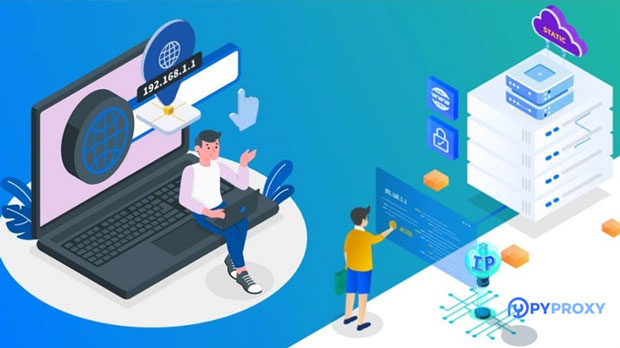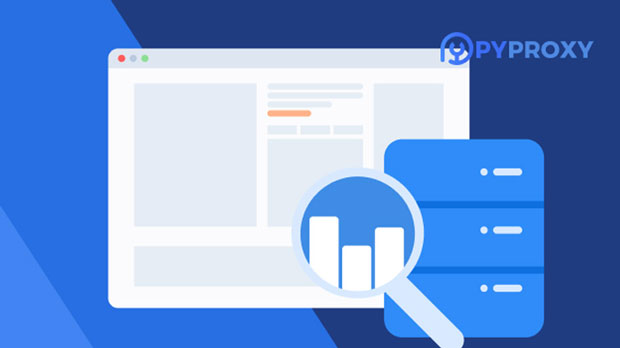When considering anonymous proxies for long-term use, two notable options often come up for comparison: PYPROXY and Proxys. These two proxy services offer different features, performance, and security protocols that could influence a user's decision depending on their specific needs. This article aims to thoroughly compare PyProxy and Proxys, analyzing the key aspects of each to determine which is more suited for long-term use. By diving into the features, performance, security, pricing, and customer support of both proxies, we will provide a comprehensive guide to help users choose the best option for their long-term anonymity and security requirements. Overview of PyProxy and ProxysWhen evaluating the longevity of anonymous proxies, it is essential to examine how each service performs over time. Both PyProxy and Proxys are designed to provide secure and private browsing, but they differ in terms of infrastructure, anonymity levels, and reliability. PyProxy is a flexible proxy service, known for its high configurability and extensive list of features, which can cater to a wide range of users. It provides users with secure access, avoiding tracking and censorship, and it offers several advanced options for developers who want to customize their proxy experience.Proxys, on the other hand, focuses on user-friendly interfaces and a more straightforward setup. It has gained a reputation for being reliable, offering standard privacy and security features that work well for everyday internet usage. While both are suitable for users seeking anonymity, understanding their individual strengths and weaknesses is crucial for determining which one is more appropriate for sustained use.Features and FlexibilityOne of the most significant factors in choosing a long-term proxy solution is the features and flexibility offered by the provider. PyProxy stands out in this area due to its high degree of customization. It allows users to tweak various settings, integrate different protocols, and adjust the proxy behavior to meet specific privacy needs. Developers often prefer PyProxy for its ability to support a variety of programming languages and applications. For long-term use, the ability to adapt to different circumstances or to implement additional security measures is an invaluable advantage.Proxys, in comparison, offers a more standardized set of features. Its focus is on providing stable and reliable performance without the need for deep customization. While this simplicity can be advantageous for users looking for ease of use, it may not provide the flexibility required for long-term, high-demand usage. For individuals with unique needs or advanced privacy concerns, Proxys might fall short.Performance and SpeedIn terms of performance, both PyProxy and Proxys aim to provide fast, stable, and low-latency connections. However, the actual speed and reliability can vary depending on the user’s location, the type of proxy (HTTP, SOCKS, etc.), and the load on the server.PyProxy has a reputation for offering fast speeds, especially when utilizing dedicated or private proxies. Its infrastructure is designed to scale with demand, providing users with more reliable connections over time. However, PyProxy’s speed can sometimes fluctuate depending on the configuration or if advanced features are enabled. Therefore, while it can be a good choice for long-term use, maintaining consistent speed might require users to have some technical expertise.Proxys, on the other hand, is often perceived as being more consistent in terms of speed and reliability. The service prioritizes user experience, ensuring that most users experience minimal latency and stable connections. For individuals seeking a hassle-free experience without frequent technical adjustments, Proxys can be a reliable option. However, for users in more demanding environments or those who require specialized proxy configurations, the performance of Proxys might not be as adaptable as PyProxy’s.Security and AnonymitySecurity and anonymity are paramount when selecting an anonymous proxy for long-term use. Both PyProxy and Proxys prioritize protecting user privacy, but they do so in different ways.PyProxy offers enhanced security features, including the ability to use encrypted protocols, DNS filtering, and traffic routing that helps prevent leaks. These features make it an excellent choice for users who require top-tier privacy protection over extended periods. PyProxy’s customization also allows users to adjust security settings based on their risk level, making it a flexible option for long-term security.Proxys generally offers standard security measures like encryption, IP masking, and traffic anonymization. While these features provide decent protection for the average user, they may not be robust enough for individuals with advanced security concerns. For long-term use, Proxys might be a good choice for those who don’t require the most advanced protection but still want a reasonable level of anonymity and security.Pricing and ValuePricing is often a key factor in determining which proxy service to choose for long-term use. A high-quality proxy that is too expensive might be unsustainable for long-term use, while a cheap service with low performance can lead to frustration and compromised security.PyProxy offers various pricing tiers based on the level of customization and features. While the higher-end packages might seem expensive, they provide excellent value for users who require advanced functionality, high security, and premium customer support. The ability to choose different pricing plans based on specific needs makes PyProxy an appealing option for users with a variety of budgets.Proxys is generally more affordable, offering standard packages that are easy to understand. For users who do not need highly customized proxies or advanced features, Proxys presents a cost-effective solution. However, the trade-off might come in the form of fewer options for scaling or expanding services over time. If you are looking for a long-term solution with minimal investment, Proxys can be a reasonable choice. Customer Support and ReliabilityFor long-term use, responsive and reliable customer support is an essential factor. Both PyProxy and Proxys offer customer support, but there are notable differences in their approach.PyProxy is known for its responsive support team, particularly for users who require specialized technical assistance. As the service is highly customizable, users often encounter unique issues that require personalized help. PyProxy’s support is typically available 24/7, and it offers various communication channels for quick resolution.Proxys, on the other hand, offers more basic customer support. While it is generally adequate for straightforward issues, users with more complex queries might find the support response times longer or less detailed. For customers who are new to proxies or need less frequent technical assistance, Proxys can still be sufficient. However, for long-term users requiring continuous support, the more specialized help provided by PyProxy may be a better choice.Conclusion: Which Proxy is More Suitable for Long-Term Use?In conclusion, both PyProxy and Proxys offer strong features, but they cater to different types of users and needs. PyProxy is better suited for long-term use by individuals who need high flexibility, advanced security, and the ability to customize their proxies. It is ideal for developers, privacy-conscious users, and those with specific demands that require detailed configurations. Although it requires more technical knowledge and potentially higher costs, its long-term value lies in its adaptability and robust security features.Proxys, on the other hand, is ideal for users looking for a straightforward, reliable proxy with minimal maintenance. It is more suited for individuals who do not need extensive customization or who want a more user-friendly solution. While it may not offer the same level of flexibility or advanced security as PyProxy, it is a great choice for long-term use for those seeking simplicity and affordability.Ultimately, the decision depends on your specific requirements. If you need a proxy that grows with your needs and offers greater security and customization, PyProxy is the better choice. However, if you prioritize ease of use and reliability at a lower cost, Proxys might be the right fit for your long-term proxy needs.
Mar 28, 2025
![arrow]()



























































